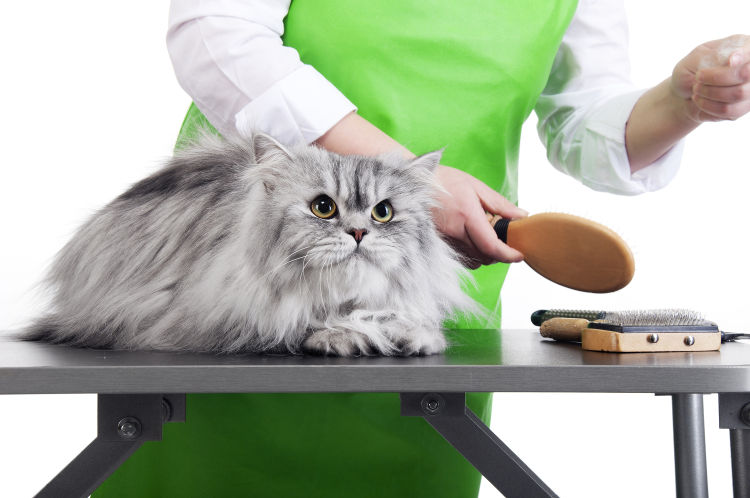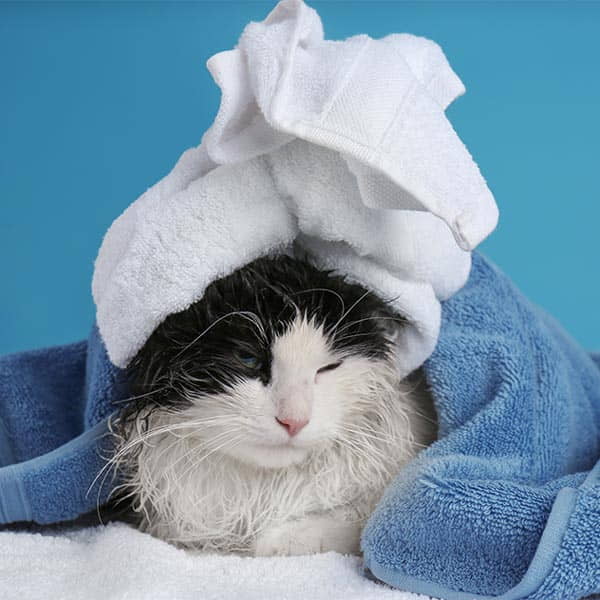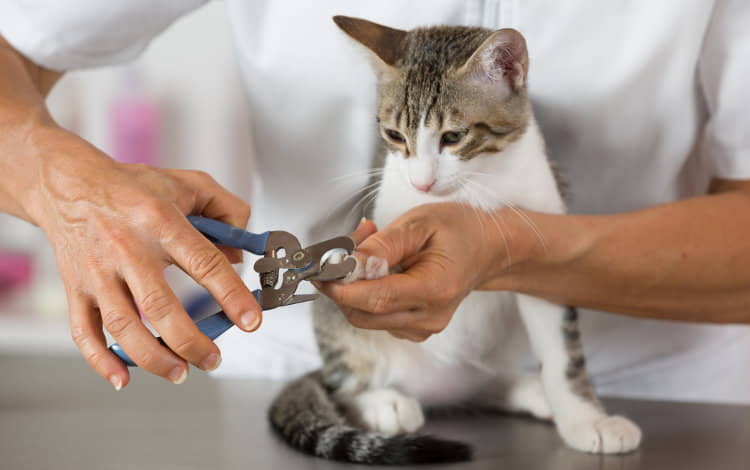Article provided by Catfoodsite
Some cats require more grooming than others. Generally, the more fur a cat has, the more grooming she will need. Senior cats require a lot more grooming because they groom themselves less meticulously. If you acclimate your cat to the grooming process as early as possible, grooming can be incident-free. If your cat simply won’t enable you to groom her, find yourself a professional groomer.

Brushing
Frequent brushing is essential to keep your cat from getting hairballs, which can sometimes require surgery to remove. Brush shorthaired cats at least once weekly and longhaired cats at least every other day. When the warm weather hits in the spring, you may need to groom more often as your cat sheds her winter coat.
A de-shedding tool is especially effective at removing hair, but care should be taken when using it. Don’t start by enthusiastically raking your cat’s backbone. Gently stroke her, then draw the brush across the very top of her coat without catching any hair in the teeth or bristles.
Don’t assume that what works for one will work for all. You may have to try several different brush or comb types before finding one that works well on a particular cat.
Removing Mats
Mats are painful to your cat and can restrict movement, so they should be removed as soon as you notice them. In the event that you brush your longhaired cat every other day, it will obviate the need to remove mats. But inevitably, every longhaired cat will develop them, and you’ll need to be adept at removing them without harming your cat.
The safest way to remove mats is with clippers. Have a helper hold the cat still while you shave away the mat.
If your cat has a number of mats, it’s much easier and safer to take her to a professional groomer.
Bathing

Some cats rarely need baths; others, like members of the Sphynx cat breed, need weekly baths.
Bathing is easier if the cat has been accustomed to bathing since an early age. If she is not a frequent bather, you may need to prepare for battle
For specific advice on how to give your cat a bath read How to Survive Giving Your Cat a Bath.
Nail Clipping
As a general rule, you should trim your cat’s nails at least monthly. This procedure is best done with a helper who holds the cat in his lap while you trim the claws. If your cat isn’t wild about this procedure, wrap her in a towel to immobilize her, exposing one paw at a time.
As you look at the claw, you’ll notice a triangular pink area, which is the quick. Avoid cutting into this area, as doing so will cause bleeding and pain. To start, hold a paw and press the toe pad to extend the claw. Talk to your cat in a calm, soothing voice while you clip the tip of each nail. Clip straight up with a vertical cut, not diagonally across the nail. This will keep the nail from splitting.

Many cats only need their front claws trimmed, so don’t feel you require to trim the rear claws if they don’t require it. If you snip the quick, don’t panic. Use a styptic to stop the bleeding, and calm your cat with a low soothing voice.
Ear Cleaning
Check your cat’s ears twice a month for dirt and wax buildup (and ticks if your cat spends time outdoors). Some breeds produce more wax than others and require more frequent cleaning.
To clean your cat’s ears, enlist the aid of a helper to restrain her. Wrapping her in a towel will help. Clean the ear lobe using a cotton ball to gently remove dirt, wax, and debris.
Only clean the parts of the ear that are visible. If there appears to be debris inside the ear canal, have a vet remove it.
Read more about cat breeds and cat grooming on Catfoodsite.com.
Wondering about Are Cats Clean? Check it out on our latest post!


0 Comments